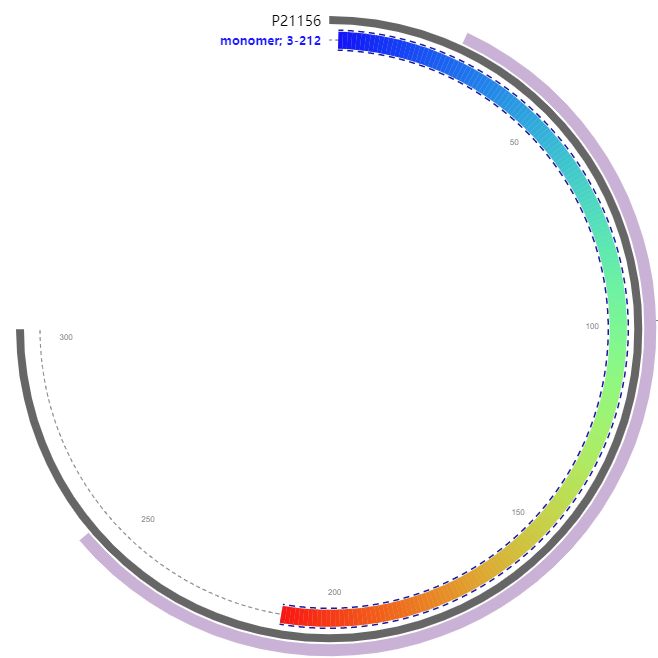This protein is involved in the subpathway that synthesizes sulfite from sulfate. ATP + H+ + sulfate = adenosine 5'-phosphosulfate + diphosphate
MDQIRLTHLRQLEAESIHIIREVAAEFSNPVMLYSIGKDSSVMLHLARKAFYPGTLPFPL
LHVDTGWKFREMYEFRDRTAKAYGCELLVHKNPEGVAMGINPFVHGSAKHTDIMKTEGLK
QALNKYGFDAAFGGARRDEEKSRAKERIYSFRDRFHRWDPKNQRPELWHNYNGQINKGES
IRVFPLSNWTEQDIWQYIWLENIDIVPLYLAAERPVLERDGMLMMIDDNRIDLQPGEVIK
KRMVRFRTLGCWPLTGAVESNAQTLPEIIEEMLVSTTSERQGRVIDRDQAGSMELKKRQG
YF
308

| PMID | Title & Author | Abstract | Year | |
| 0 | 15184554 | The Mycobacterium tuberculosis cysD and cysNC genes form a stress-induced operon that encodes a tri-functional sulfate-activating complex.Rachel Pinto , Quing Xui Tang , Warwick J Britton , Thomas S Leyh , James A Triccas | Sulfur metabolism has been implicated in the virulence, antibiotic resistance and anti-oxidant defence of Mycobacterium tuberculosis. Despite its human disease relevance, sulfur metabolism in mycobacteria has not yet been fully characterized. ATP sulfurylase catalyses the synthesis of activated sulfate (adenosine 5'-phosphosulfate, APS), the first step in the reductive assimilation of sulfate. Expression of the M. tuberculosis cysD gene, predicted to encode the adenylyl-transferase subunit of ATP sulfurylase, is upregulated by the bacilli inside its preferred host, the macrophage. This study demonstrates that cysD and cysNC orthologues exist in M. tuberculosis and constitute an operon whose expression is induced by sulfur limitation and repressed by the presence of cysteine, a major end-product of sulfur assimilation. The cysDNC genes are also induced upon exposure to oxidative stress, suggesting regulation of sulfur assimilation by M. tuberculosis in response to toxic oxidants. To ensure that the cysDNC operon encoded the activities predicted by its primary sequence, and to begin to characterize the products of the operon, they were expressed in Escherichia coli, purified to homogeneity, and tested for their catalytic activities. The CysD and CysNC proteins were shown to form a multifunctional enzyme complex that exhibits the three linked catalytic activities that constitute the sulfate activation pathway. | 2004 |
| 1 | 28729857 | Nutrient Acquisition and the Metabolic Potential of Photoferrotrophic Chlorobi.Katharine J Thompson , Rachel L Simister , Aria S Hahn , Steven J Hallam , Sean A Crowe | Anoxygenic photosynthesis evolved prior to oxygenic photosynthesis and harnessed energy from sunlight to support biomass production on the early Earth. Models that consider the availability of electron donors predict that anoxygenic photosynthesis using Fe(II), known as photoferrotrophy, would have supported most global primary production before the proliferation of oxygenic phototrophs at approximately 2.3 billion years ago. These photoferrotrophs have also been implicated in the deposition of banded iron formations, the world's largest sedimentary iron ore deposits that formed mostly in late Archean and early Proterozoic Eons. In this work we present new data and analyses that illuminate the metabolic capacity of photoferrotrophy in the phylum Chlorobi. Our laboratory growth experiments and biochemical analyses demonstrate that photoferrotrophic Chlorobi are capable of assimilatory sulfate reduction and nitrogen fixation under sulfate and nitrogen limiting conditions, respectively. Furthermore, the evolutionary histories of key enzymes in both sulfur (CysH and CysD) and nitrogen fixation (NifDKH) pathways are convoluted; protein phylogenies, however, suggest that early Chlorobi could have had the capacity to assimilate sulfur and fix nitrogen. We argue, then, that the capacity for photoferrotrophic Chlorobi to acquire these key nutrients enabled them to support primary production and underpin global biogeochemical cycles in the Precambrian. | 2017 |
| 2 | 2185135 | Promoter elements and regulation of expression of the cysD gene of Escherichia coli K-12.M S Malo , R E Loughlin | The cysD gene, involved in cysteine biosynthesis in Escherichia coli and Salmonella typhimurium, is positively regulated by the CysB regulatory protein. The cysD promoter of E. coli K-12 in a 492-bp PstI-Eco RI fragment was sequenced. The in vivo transcription start point (tsp) for the cysD gene was determined by the methods of T4 DNA polymerase mapping and mung-bean nuclease mapping. The -10 region of the cysD promoter (TATAGT) is closely homologous to the -10 consensus sequence (TATAAT) for E. coli promoters. The -35 region of this promoter (TTCATT) is less closely related to the -35 consensus sequence (TTGACA). Several mutants were obtained by using a chain-termination method for generating unidirectional deletions. Evidence is presented for a possible CysB protein binding site around -89, thought to be involved in regulation of expression of the cysD gene. | 1990 |
Pinto, R. The Mycobacterium tuberculosis cysD and cysNC genes form a stress-induced operon that encodes a tri-functional sulfate-activating complex[J]. Microbiology, 2004, 150(6):1681-1686.